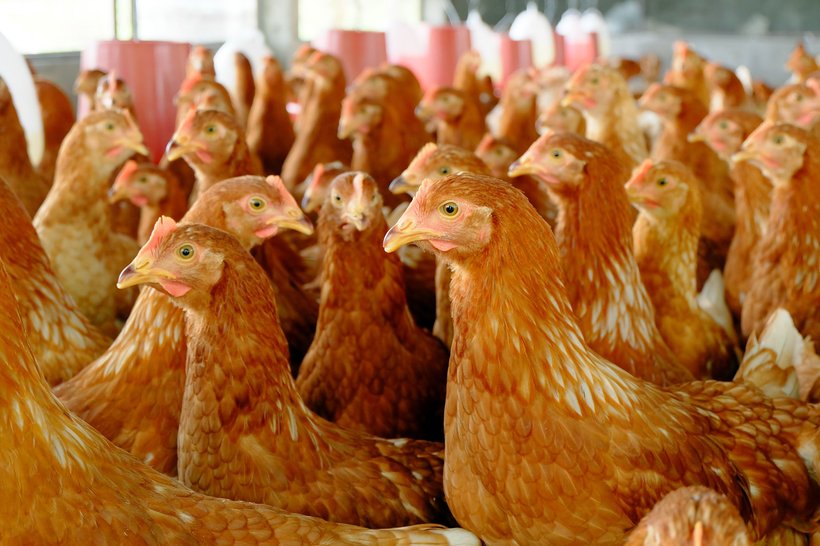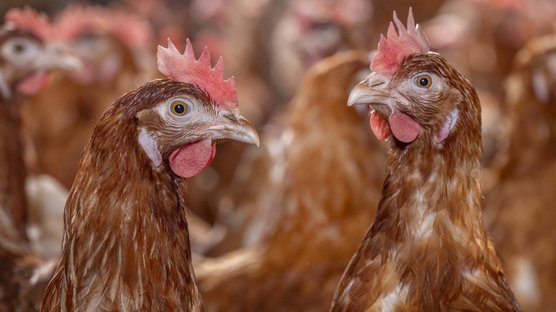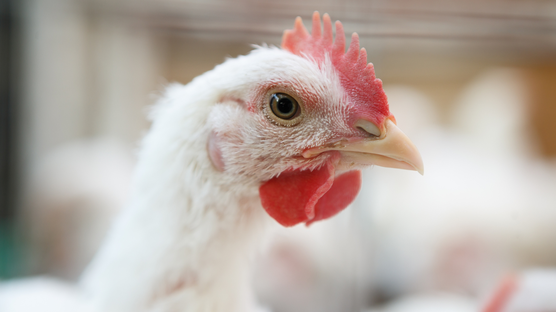
Published on May 7, 2024
Pendulous Crop in laying hens
Pendulous crop is an abnormal condition in poultry where the crop is grossly distended and contains feed and fluid, often with a foul smell due to fermentation. When chickens are raised in floor system, litter is also often found in the crop. In severe cases, lining of the crop may be ulcerated.
Turkeys are more sensitive to suffer from pendulous crop, but broilers and layers can also be affected, although incidence is normally low. In layer type chickens, it is more frequently seen in pullets in rearing, sometimes from early ages, but in general is just a sporadic finding in a few individuals.
The cause of the problem is not well understood, but there are some management practices, nutritional and health factors which seem to be linked to its incidence.
Role of the crop
The crop is a thin-walled diverticulum of the esophagus located to the right of the trachea at the thoracic inlet. The crop is supported by two muscles that support the crop and aid in the emptying process. The main function of the crop is to store feed and to mix it with water to soften feed particles.
Following feed ingestion, the crop naturally distends and becomes full of feed. As the feed in the gizzard is moved into the intestine, the crop initiates contractions to empty its content into the esophagus and supplying more feed to the proventriculus and gizzard. The importance of the crop in diet digestion will be affected by the amount of time that feed spends there: a longer retention contributes to lowering the pH by increased fermentation, which has a positive impact on activity of enzymes (exogenous and endogenous).
The crop also plays a role as a first defense against poultry pathogens, due to presence of lactobacilli and lactic acid and other volatile fatty acids produced in the fermentation process, lowering the pH of the crop.
When a chicken is examined, a normal crop should feel swollen and slightly firm after eating, even coarse feed particles can be felt at palpation. If crop is too hard or it is visibly too distended and soft, this means that its content does not empty regularly, so the crop is not functioning normally. Affected birds continue to eat but, since normal feed passage is altered, nutrients are not properly absorbed, and birds lose weight and become gradually emaciated and may die.
Etiology
Although exact cause is not well known, there are several factors contributing to the condition to develop in poultry flocks:
Management
Any management practice leading to excess of feed and/or water consump tion in a short time (binge eating) may result in stretching and damaging the tissues of the crop which eventually will lose its capacity to contract and empty:
- Uneven feed or water distribution: unsuitable feeding times or feeding equipment failure leading to unwanted feed restriction.
- Too fast eating birds, for example if the daily empty feeder period is too long.
- Excessive water intake when young birds are brooded under very hot conditions.
Nutrition
- Feed with a too high content of coarse and fibrous poorly digestible materials .
- Sudden access to tall fibrous grass in birds kept in free-range system.
- Feed structure: use of pelleted feed, that does not promote the development of the gizzard, an organ playing a key role in regulating the gastrointestinal feed flow, has been demonstrated to increase the incidence of pendulous crop. Too fine feed can lead to intake of large amounts of indigestible materials (litter, feathers..) and therefore results in excessive crop distension.
- Source of carbohydrates: experimental research showed that use of glucose monohydrate (cerelose or dextrose) replacing starch in the diet leads to an increase of some fungi in the crop (mainly Saccharomyces tellustris) which produce high amounts of gas resulting in constant stretching of the crop wall.
Diseases
- Marek’s disease: vagus nerve, responsible of the innervation of the crop, can be damaged, leading to malfunctioning of the organ.
- Protozoal infection: Trichomoniasis, a parasitic disease generally characterized by small yellowish lesions in the oral cavity.
- Worms: some species of Capillaria can invade the crop causing inflammation of its lining or even a partial blockage in case of high parasite load.
- Fungal infections: Candidiasis is an opportunistic mycotic disease affecting the wall of the crop and causing inflammation, producing whitish patches on the interior lining. It is generally linked to poor microbiological quality of drinking water but can also appear after a long antimicrobial treatment.
Treatment and prevention
Control of pendulous crop should be based mainly in prevention, as there is not a clear effective treatment.
- Monitoring feed structure: using a coarse mash feed which promotes crop and gizzard normal function and prevents overeating of indigestible materials.
- Proper management of feeding techniques: using meal feeding and emptying feeders once per day contributes to the development of a healthy crop, but the empty feeder period should not be too long.
- Checking feed composition: making sure it is matching the recommendations for the birds’ age and there are no unusual raw materials included.
- Using always clean good quality water.
- Using acidifiers in drinking water usually helps to control the problem.
- Adding iodine or copper sulphate in drinking water as per label directions can help in cases of crop mycosis (Candidiasis)




